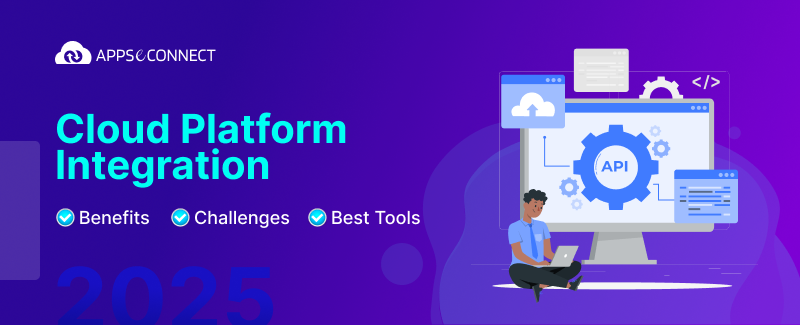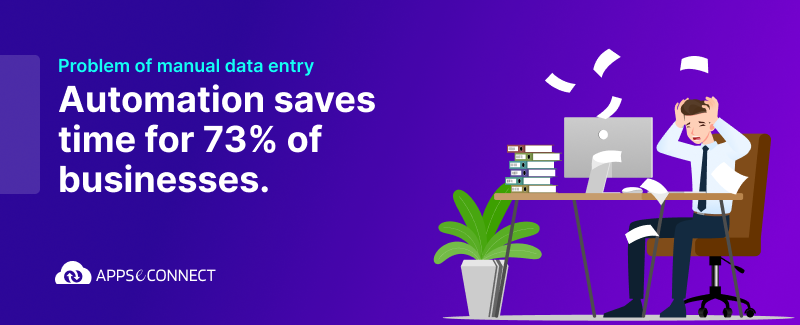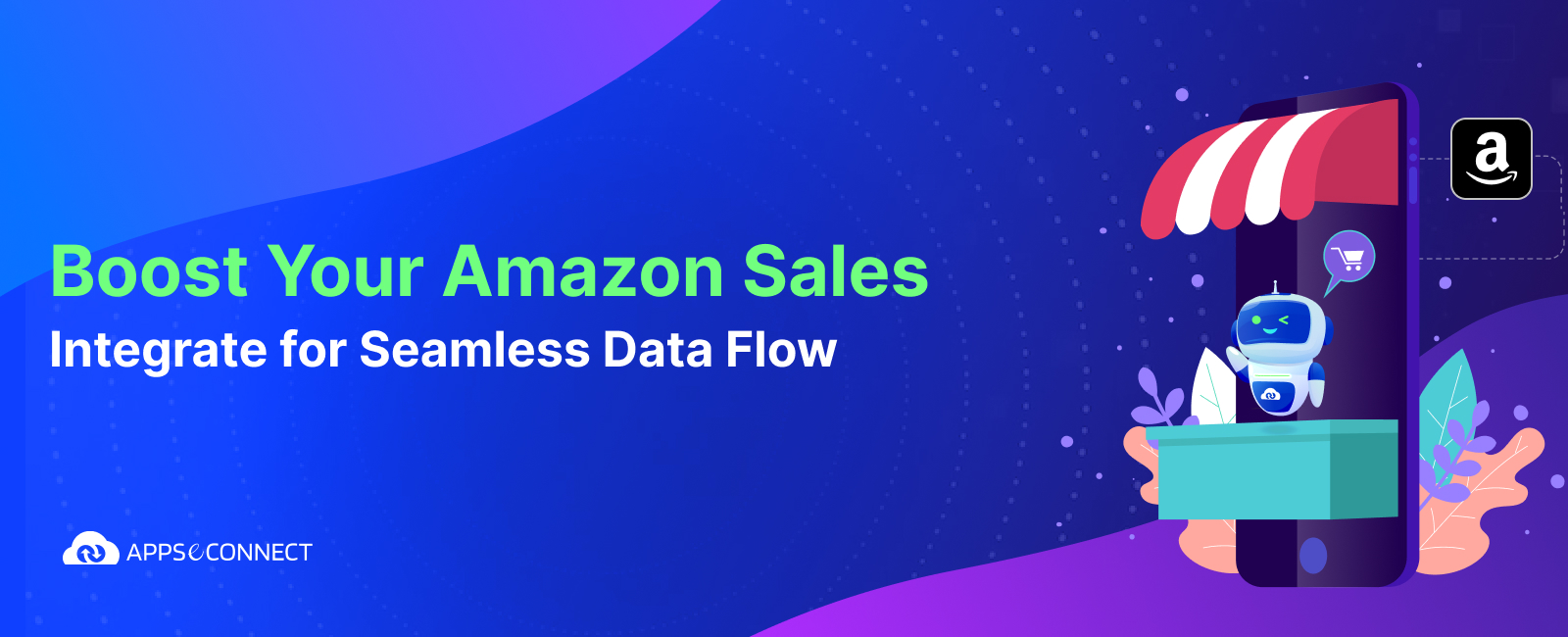So, you’ve finally decided to put your business on steroids by implementing app integration. Integrated platform as a service (iPaaS) is a business imperative that smart companies have already adopted. As any C-level executive would tell you, it is great to be able to bring ERP, ecommerce, CRM, POS, Shipping and other applications under a single interface. Yet, integrating all these disparate apps using iPaaS model comes with certain challenges. Recognizing these challenges will help in successful deployment and implementation.
Basic challenges: Little knowledge about Integration
The most basic challenge to successful implementation is, clients often do not understand what they are getting into. They do not do their groundwork before investing in iPaaS. Here are some challenges related to lack of knowledge about integration:
1. Not knowing what you want
If you do not know why you plan to integrate your applications, there are going to be some major problems. As Integration Platform as a Service (iPaaS) has become the next buzzword, many businesses simply expect it to fix their problems, without knowing what they expect from it.
2. Not knowing what integration does
Businesses often have unrealistic expectations regarding iPaaS. It helps to speak with knowledgeable consultants before making that investment. Understanding what integration does and the challenges that it brings to a business is very important.
3. Not knowing what the challenges are
Most businesses do not understand cloud adoption, and how it is deployed and implemented. Often, they expect cloud integration to take place smoothly, without understanding the challenges that are inherent to integration. This lack of knowledge related to challenges itself is a challenge.
4. Not knowing how to manage post-integration issues
Once software applications are integrated, there are going to be kinks that need to be fixed. There could be unforeseen loopholes and bugs that need to be ironed out, and updates that need to be made. Businesses should have a contingency plan to manage these post-integration issues.
5. Not knowing where to seek help
Once an integration app has been deployed and implemented, clients often hesitate to seek help. If they are ready to seek help, they may not know where to seek help. This proves to be a challenge, and the best way to tackle this solution is to choose a vendor that offers post-sales support.
Your vendor probably isn’t all that great
Despite attractive brochures, convincing sales talk, and impressive demos, your vendor may not be as good as they seem to you. This is why choosing the right iPaaS vendor is a crucial aspect of integration success. Here are some reasons why vendors may fail:
6. The vendor doesn’t do R&D
Does your vendor have an R&D unit? If they don’t, they probably are not able to innovate as time passes by. Make sure your vendor is interested in innovation, research and development. This helps to evolve integration app even after it has been implemented.
7. The vendor doesn’t push for testing
If your vendor is telling you that there is going to be testing once the integration has been developed and customized for your needs, you might want to be wary. Scrupulous testing is the hallmark of a professional vendor who is keen on building products that work without fail.
8. Testing isn’t exhaustive enough
Manual and automatic testing is often required for integration apps too, even if there are pre-existing proprietary tools sold by your vendor. If your vendor does not test the existing app exhaustively in your environment, it could prove to be a major challenge.
9. You are not given a prototype
Though your vendor may claim that the prototype product is completely backwards-compatible and all you need to do is plug and play, there still needs to be prototype testing to ensure that integration really works. Lack of a prototype or not being offered a prototype to test can prove to be big issues.
10. The vendor doesn’t offer a proof of concept
When you discuss your requirements, the vendor should be able to provide a proof of concept, which goes beyond demonstrating that you can plug and play. The vendor should be ready to customize this proof of concept and deploy only those features that are uniquely required for your business.
Still Worried with SAP Vendor? Choose the right Sap Vendor for yourself.
Not working out the kinks
Many challenges arise in the initial stage, which includes planning. Without proper planning and strategy, iPaaS deployment and implementation may not be as successful as you might wish it to be.
11. Does not cover all possible business scenarios
Did you ever stop to think if your iPaaS solution will help you scale up as you grow, or will actually be a hurdle? Did you stop to ask yourself what might happen when one of the key components of your integrated app is updated? What if you want to scale down, and do not need all the features? Not asking these important questions about possible business scenarios could be a challenge.
12. The cost of integration
Integration costs money, and it usually isn’t a onetime cost, even if your vendor might tell you so. There will be always be costs related to upgrading, customization, training, and vario0us other process. Not accounting for hidden costs and future expenditure can prove to be a challenge.
13. Time constraints
If you want a solution within a few days or weeks, you will need to work with your vendor to ensure all necessary features and customizations are made before deployment and implementation. While plug-and-play ensures that you are able to use certain products immediately, it still makes sense to test, train and customize before deployment and implementation.
14. Not addressing connectivity requirements
Connectivity issues go beyond disparate components within an integrated solution. Often, connectivity capabilities do not support disaster recovery or requested service levels. When two or more cloud services are integrated, connectivity requirements need to be considered on the whole.
15. Not taking the cloud environment into consideration
Both clients and vendors often choose to ignore cloud environment they are working with. They may not successfully manage all the environments within a hybrid cloud system. Vendors may also focus on fixed-function management apps, instead of considering APIs.
16. Not having a backup or archival plan
Before integration, there has to be a contingency plan for backup, archiving and disaster recovery. Those involved often fail to monitor backups, to determine backup capabilities, and to ensure legal and regulatory compliances at the cloud providers’ physical location. Missing out on these can prove to be big challenges.
17. Not being prepared for data tsunami during integration and migration
Let’s face it. Integration results in large amounts of data, and also creates a situation where data will need to be moved from one environment to another. In many situations, both clients and vendors may conveniently ignore the data tsunami, if we may call it that, which results when integration and migration take place.
18. Not opting for post-implementation training
Whether it is to cut costs or sheer laziness of those involved in decision making, post-implementation training is often given a miss. When integration is implemented, employees are often poorly trained when it comes to using. What really happens is, they go back to their old ways of manual entries even after integration.
The little things that matter a lot
The little things are often ignored while integrating, and that’s because, neither the client nor the vendor worry about them. However, these often-ignored challenges can prove to be expensive.
19. Data access control
As integration involves cloud environments at a deep level, admins often misunderstand the level of risks they may be taking with access control. SaaS brings a whole lot of security related challenges with respect to data access control. Failing to monitor settings and not customizing them to a cloud situation can result in serious data breaches.
20. The integration is faulty
It is not uncommon for integrations to be faulty. Files may not sync correctly, communication can take place between wrong departments or customers. Information may not be gathered automatically, so on and so forth. This is also one of the reasons why post-implementation testing is so very important.
21. In-depth integration is missing
Integration can also be a very superficial product, touching only on features that are deemed necessary, without considering future scaling or unknown requirements. Deep level integration is often missing from many readily available plug and play products.
22. Taking performance for granted
When clients invest in iPaaS, they often take its performance for granted. They overlook software updates, maintenance, backups and various other factors that help to keep an integrated app functioning efficiently. As in many other things in life, iPaaS performance can’t be taken for granted.
23. Forcing too many features into an application
While superficial integration is a problem with some projects, the opposite can be true too. Certain clients and vendors enthusiastically add features that may not be necessary, and can bulk up the application, leading to reduced productivity and efficiency.
The elephant in the room: Technical Challenges
It needs to be said that technical challenges still pose grave difficulties to both companies and vendors, while deploying and implementing an integration.
24. Data mapping gets complex
One of the biggest challenges of iPaaS is that vendors need to map all the data that belongs to a company. Data mapping is time-consuming and is prone to a number of risks. If your vendor lacks a unified integration strategy, data mapping becomes so much more difficult.
25. Limitations posed by APIs
Companies often expect vendors to provide the APIs to integrate different apps. However, this isn’t always true. Moreover, it needs to be remembered that APIs of many SaaS apps do not support full integration. A centralized layer is usually required along with APIs.
26. Closed platforms
If your vendor uses proprietary tools to integrate your app, you may find it difficult to seek external help. Closed platforms limit your ability to control and manage your applications. Using open source solutions will not only help you integrate seamlessly, but will also help you seek external help if you face problems with your existing vendor.
27. Extracting data from the source system
Many times, it could be a challenge to extract data from source applications. Certain ERPs and other apps make it difficult to extract data so that security can be protected. However, this can prove to be a problem during integration.
28. Mediating semantic differences
Semantic mediation helps you to transform data quickly, ensuring that large pockets of data are moved without hurdles. This helps to enhance performance. However, semantic mediation is often not given the importance it deserves.
29. Mediating technical differences
Most software programs are written in different languages, and there are far too many technical differences between them than there are similarities. Not mediating these technical differences can lead to unnecessary delays.
30. Mediating firewall
Large amounts of data that are processed by iPaaS need to go through firewalls to ensure protection. Yet, not meditating how this is going to be externalized and consumed is going to create problems, as all data will not be compliant with port 80.
31. Cloud to enterprise integration
It is often easy to ignore business and administrative aspects when it comes to integrating cloud and enterprise apps. This results in unforeseen delays and incurred costs as issues will need to be resolved as and when they appear.
32. Cloud to Cloud integration
When integration takes place between apps located within two different cloud environments, there can still be challenges with respect to data migration and semantic mediation. These issues may also appear when two different cloud apps are managed by two different vendors.
33. Complex integration paths
Integration paths can sometimes prove to be too complex, if data and applications are large. If there are far too many factors to consider, and if deeper level integrations are requested, pathways can turn out to be complex.
34. Maintenance and upgrading challenges
You may often wrongly assume that just because integration is plug and play, you can set it up and forget about it. This is not really the case. Apps will still need to be maintained and upgraded, when original components of an integrated app are updated too.
35. Interoperability challenges
Software programs need to communicate with each other in order to function as a single unit. This is true of integrated apps. To make sure integration works smoothly, interoperability issues need to be addressed.
Stuff that’s often ignored: Governance, Security, and more…
36. IT governance issues
We need to remember that all of our data will not move to the cloud. Certain policies need to be clearly laid down in order to specify how data communicates between on-premises and cloud resources.
37. Security related challenges
With additional access points and unified data, there will be security vulnerabilities that need to be addressed. On-premises infrastructure may not be as secure as cloud resources, and vendors will have to ensure strong security layers are embedded across deployment.
38. Not having all data in one place
It is simply not possible to have all data in one place. Data from the same location maybe used by different apps, and data from an app maybe stored in multiple locations. To bring all this data together and integrate an updated and unified version of this data between apps can prove to be a challenge.
39. Challenges posed by IoT
IoT solutions are giving rise to massive and diverse data, making data integration complex. This has been spurred by increased number of IoT endpoints and platforms, which are becoming commonplace among businesses.
40. Maintaining integrity of data governance gets tough
Making policies work with respect to data governance can prove to be a headache to companies, especially when they have to lay out clear policies regarding which data and apps will move to the cloud. While it is easy to specify policies, enforcing these policies can prove to be a tough job.
Now, you can easily integrate your business applications and improve your business process rapidly!
You may also like:
Integrating Business Applications – 5 Key Points to Consider
iPaaS – Integration Platform as a Service for Beginners
Event Driven Integrations using Webhooks




















